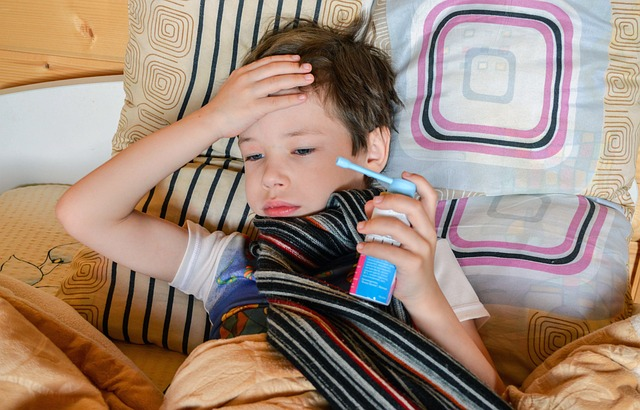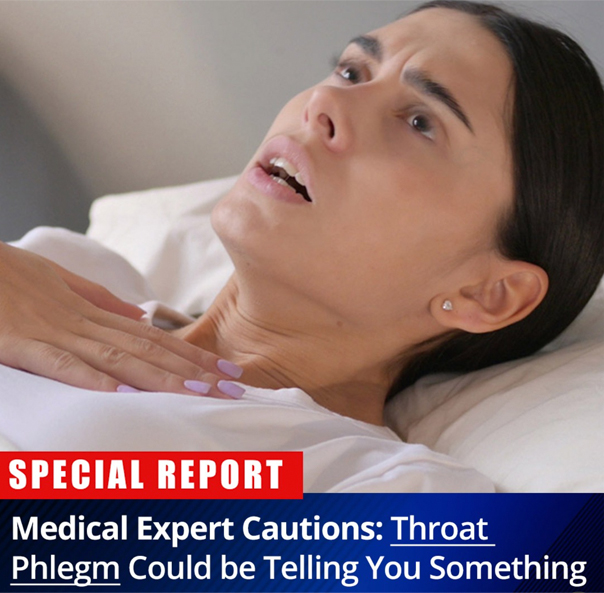Scarlet Fever: Symptoms, Causes & Treatments
Scarlet fever is a bacterial infection that can occur in individuals who have strep throat. It is also known as scarlatina and is characterized by a vivid red rash that spreads across the body. In almost all cases, scarlet fever is accompanied by a sore throat and a high fever.
But what causes this infection, and how can you prevent scarlet fever?
In this throat cleaner and diseases health blog post, we’ll explore the symptoms of scarlet fever, identify prevention strategies, and find the most effective treatment. If you’re interested in more throat disease types, make sure to check out our strep throat symptoms and throat cancer guides!
- Scarlet fever is a bacterial infection that can develop in those who have strep throat. Though anyone can get scarlet fever, it is most common in children.
- The most common strep throat symptoms are a high fever, a sore throat, and a red, sandpaper-like rash all over the body.
- If you or your child has scarlet fever, the doctor will prescribe antibiotics. There are also some home remedies to relieve sore throat pain and fever, such as gargling with salt water, eating soft foods, and sipping hot beverages.

Causes of Scarlet Fever
Scarlet fever is caused by Group A Streptococcus pyogenes (S. pyogenes), the bacterial organism that causes strep throat. However, strep throat does not progress to scarlet fever in most cases.
You see, only certain strains of S. pyogenes can produce a toxin that causes scarlet fever. So, your chances of developing this condition are extremely low. Indeed, an estimated one in ten children with strep throat will develop scarlet fever or Group A streptococcal pharyngitis.
Symptoms of Scarlet Fever
The symptoms of scarlet fever include:
- Red blotches on the skin that turn into a pink-red rash resembling sunburn. This rash feels rough, like sandpaper. The scarlet fever rash spreads over the body, especially the legs, arms, and trunk. (Skin rash is the most common sign of scarlet fever.)
- Sore throat
- Reddened throat
- High fever of at least 100.4 degrees Fahrenheit
- Chills
- Flushed face
- Red tongue with bumpy rash covered by a white coating called a strawberry tongue
- Trouble swallowing
- Headache
- Swollen glands (lymph nodes) in the neck
- Nausea or vomiting
- Abdominal pain
The first symptoms of scarlet fever — typically reddened sore throat and high fever — usually occur within 1 to 4 days after infection (1).
A red rash appears approximately 12 to 48 hours after these initial symptoms (1).
This rash fades in about 6 days (1).

How Scarlet Fever Spreads
Scarlet fever can be transmitted through fluids from the mouth and nose.
When someone with scarlet fever coughs or sneezes, the bacteria become airborne in water droplets. These droplets can be inhaled by another person or transmitted by touching an object contaminated by the droplets, such as a door handle, and then touching the nose and mouth.
Infection can also spread by touching an infected person’s skin. Consequently, sharing clothes, bedding, or towels with an infected person increases the risk of transmission.
Risk Factors
Scarlet fever can affect anyone, but it’s more prevalent in children between 5 and 15. Parents and other adults who frequently interact with children in this age range are at a higher risk. Scarlet fever is uncommon in babies and toddlers.
If you’re near someone with scarlet fever, your chances of contracting it increase. The bacteria can spread more easily among nearby individuals, such as schools, homes, or workplaces.

How is scarlet fever diagnosed?
Your healthcare provider will conduct a physical examination to diagnose scarlet fever and inquire about your symptoms. They will typically administer a rapid strep test to check for Group A strep bacteria. This involves swabbing your throat and analyzing the sample to determine the cause of your illness quickly. However, it’s worth noting that this test can miss up to 30% of strep cases.
Your healthcare provider may request a throat culture if the rapid strep test returns negative. This test type can take 24 to 48 hours to determine if bacteria is growing from the sample. Sometimes, a throat culture can detect infections the rapid strep test may have missed.
Alternatively, your provider may perform a rapid molecular strep test to determine if you have strep throat without requiring a culture.
If your child shows signs of scarlet fever, you must consult your child’s doctor for an evaluation.
Complications of Scarlet Fever
Untreated scarlet fever can cause severe complications, including:
- Skin infections
- Ear infections
- Arthritis
- Pneumonia
- Sinusitis
- Kidney disease
- Rheumatic fever, an inflammatory disease that can affect the joints, heart, brain, and skin)
- Throat abscesses (pus-filled swelling in throat tissues)
- Pediatric autoimmune neuropsychiatric disorders, a condition that triggers or worsens symptoms of obsessive-compulsive disorder (OCD) or tic disorders in some children with strep throat or scarlet fever.

How to Treat Scarlet Fever
Scarlet fever, once considered a very serious childhood disease, typically clears up within 7 days in mild cases. However, the development of antibiotics has made it easy to treat severe cases of strep infection.
Indeed, even in mild cases, seeking treatment to speed up recovery and prevent complications is essential.
Antibiotic treatment is the recommended therapy for this bacterial infection. Treatment usually involves taking oral antibiotics, such as penicillin, for 10 days. The fever should subside within 12 to 24 hours of the first dose, and most patients recover within 4 to 5 days of starting treatment. Patients who are allergic to penicillin can take erythromycin or another type of antibiotic.
It’s crucial to complete the full course of antibiotics, even if symptoms improve before it’s finished, to eliminate the infection and reduce the risk of post-strep disorders. If patients don’t see improvement within 24 to 48 hours of starting antibiotics, they should contact a doctor.
Although a patient is no longer contagious 24 hours after beginning antibiotics, it’s still important to stay at home for the entire course of treatment.
Home Remedies to Scarlet Fever Symptoms
A few home remedies can help ease the throat pain and reduce the fever associated with scarlet fever, including:
- Eat soft foods
- Drink plenty of cold water
- Suck on ice chips for a sore throat
- Sip on warm chicken broth
- Take ibuprofen (Motrin, Advil) or acetaminophen (Tylenol) to reduce fever and body aches.
- Suck on throat lozenges.
- Apply calamine lotion generously to the sandpaper rash to relieve itching. You may also take antihistamines.
- Gargle with warm salt or soda water
- Use a cool air humidifier
- Do not smoke
How to Prevent Scarlet Fever
Scarlet fever is highly contagious, but there are a few easy steps you can take to prevent transmission, including:
- Avoid large public gatherings during the spring and winter months.
- Cover your nose and/or your mouth when sneezing or coughing
- Wash your hands with hot soapy water for at least 20 seconds several times daily, especially after touching door knobs and other items in public places.
- If handwashing isn’t possible, use an alcohol-based hand sanitizer
- Thoroughly wash drinking glasses
- Use an alcohol-based wipe or spray to sanitize phones and other items at work if they have been or will be used by colleagues.
- Don’t share dining utensils, drinking glasses, or food with others
- Quarantine at home for a few days if you have scarlet fever
When to See a Doctor
It’s crucial to contact your healthcare provider if you or your child experiences a rash. Additionally, if you or your child develop symptoms of scarlet fever, such as fever, sore throat, or swollen glands, you must call your healthcare provider immediately.
After starting antibiotics, you should contact your healthcare provider if:
- Your symptoms do not improve within 24 hours of initiating treatment.
- You experience new or worsening symptoms after beginning treatment.
Summary
Scarlet fever is caused by a toxin released by Group A bacteria and can affect anyone, although it is more common in children. Its name comes from the red, bumpy rash that appears on the skin, though those with darker skin may not experience a color change but still feel the bumpy rash.
If you suspect you have scarlet fever, it is important to seek medical attention, as early treatment with antibiotics is crucial in preventing complications. In addition to medication, home remedies and over-the-counter remedies can help alleviate discomfort. With proper treatment, the infection should clear up within seven days.
Frequently Asked Questions
How serious is scarlet fever?
Scarlet fever rarely causes complications if appropriately treated. Still, there is a risk of it spreading to other areas and causing more severe infections, like ear infections, sinus infections, skin infections, and pneumonia.
What is the main cause of scarlet fever?
Bacteria called Group A Streptococcus cause both scarlet fever and strep throat. The bacteria can produce a toxin, leading to a rash that gives scarlet fever its name.
What are the 3 symptoms of scarlet fever?
The three most common symptoms of scarlet fever are a sore throat, bright red rash, and high fever.
Is scarlet fever contagious?
Yes. Scarlet fever is a highly contagious infection caused by group A Streptococcus bacteria. It is spread through close contact with an infected person or indirect contact with contaminated objects.



